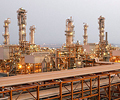BP flags further upstream output rises after 3% increase in 2023

BP on Feb. 6 forecast further increases in its upstream production in the first quarter and in 2024 as it reported a second year in a row of output rises in 2023, led by US shale and major projects.
While unveiling the results, new CEO Murray Auchincloss stressed the company’s commitment to a transition to low-carbon energy, saying “2023 was a year of strong operational performance with real momentum in delivery right across the business … As we look ahead, our destination remains unchanged – from IOC (integrated oil company) to IEA (integrated energy company).”
The results underline how BP has stabilized its oil and gas production as several of its peers face a decline in volumes. It follows an about-turn by former CEO Bernard Looney in February 2023 in which he withdrew plans for a 40% reduction in oil and gas output by 2030.
BP’s upstream production, including from its LNG-focused gas and low carbon unit, rose 2.4% on the year in the fourth quarter to 2.32 million b/d of oil equivalent, with production in the gas and low carbon segment falling, while production in the core oil production and operations unit rose almost 9% to 1.42 million boe/d.
BP highlighted the performance of its BPX shale unit in the US, saying oil and gas production from the unit had surpassed 400,000 boe/d in November, up more than 25% from fourth-quarter 2022, with contributions from each of the basins where it is present.
BPX “remains on track to deliver 2025 volumes 30%-40% higher than 2022 levels,” it said.
It also noted contributions from the North Sea Seagull project, which came on stream in October, and said it had taken a final investment decision on a three-well tie-back to the BP-operated Argos project in the US Gulf of Mexico, dubbed the Argos Southwest Extension. In addition, it has approved a three-well expansion at the Shell-operated Great White project in the Gulf of Mexico.
BP in October highlighted a commitment to increasing its US upstream output from around 600,000 boe/d in 2022 to 1 million boe/d by the end of the decade, a 7% annual growth rate. Auchincloss was expected to expand on his strategy at an investor presentation later.
Platts assessed the North Sea Dated Brent benchmark at $79.23/b on Feb. 5, up 15 cents on the day, S&P Global Commodity data showed.
Downstream weakness
In the downstream sector, BP noted weak refining margins in the fourth quarter, offset by lower turnaround and maintenance activity than a year earlier. It also noted weak results for oil trading compared with the year-earlier period.
Looking ahead, it said it expected a significantly lower maintenance impact in the first quarter compared with Q4 2023, offset by lower industry refining margins generally, with a greater impact on the company’s actual refining realizations due to narrower differentials in heavy crude pricing; its flagship Whiting refinery in Indiana operates largely on a diet of heavy Canadian crude. The refinery spent a significant part of Q4 under maintenance.
BP reported lower profits overall, and a $4.6 billion financial impairment reflecting changed price assumptions, activity phasing and economic forecasts, it said.
It said it would maintain capital expenditure in 2024 and 2025 at $16 billion, down from actual capex of $16.3 billion in 2023, and compared with earlier medium-term guidance of $14 billion-$18 billion annually.
Source: Platts

 Hellenic Shipping News Worldwide Hellenic Shipping News Worldwide, Online Daily Newspaper on Hellenic and International Shipping
Hellenic Shipping News Worldwide Hellenic Shipping News Worldwide, Online Daily Newspaper on Hellenic and International Shipping





















 PG-Software
PG-Software